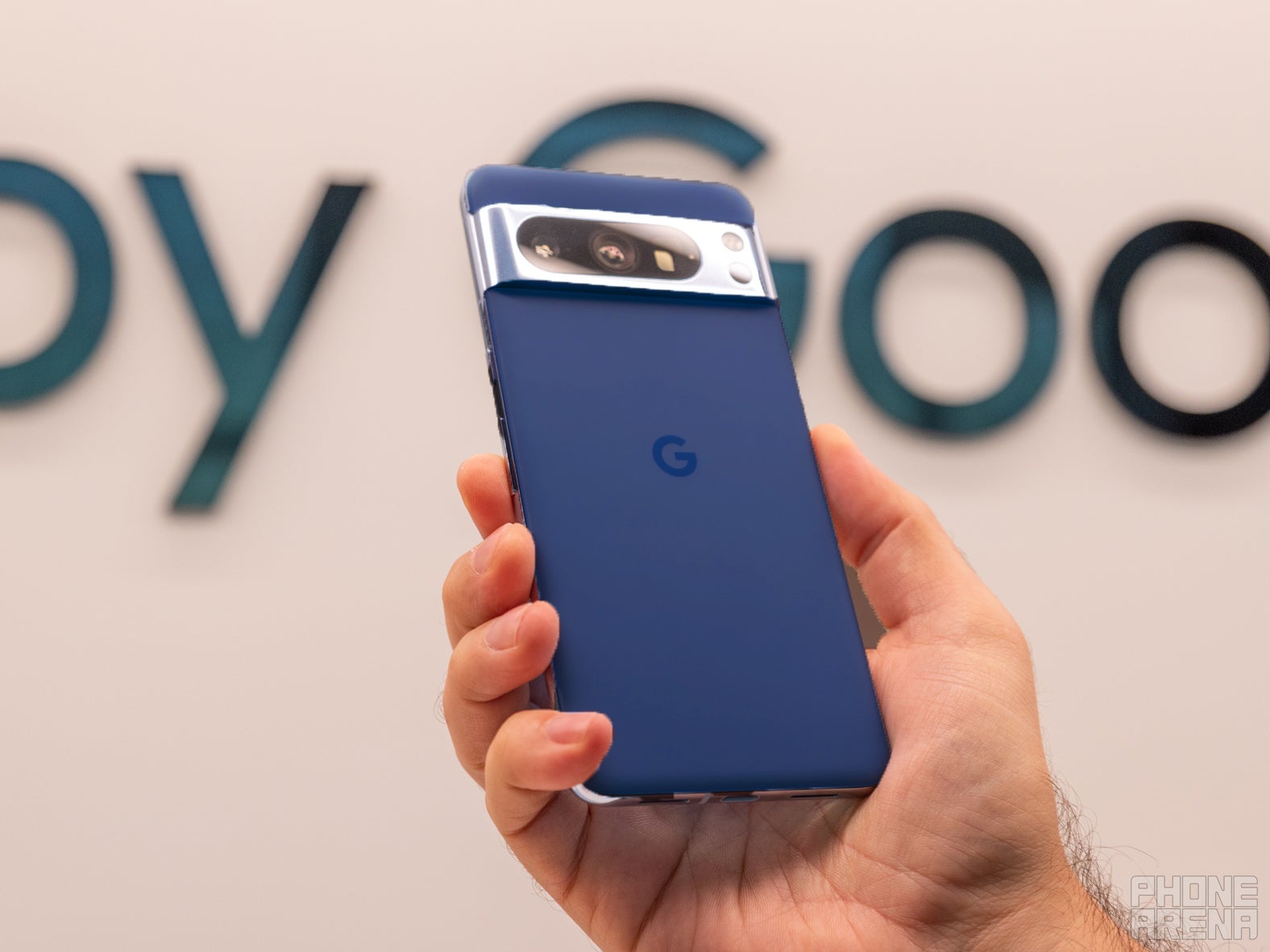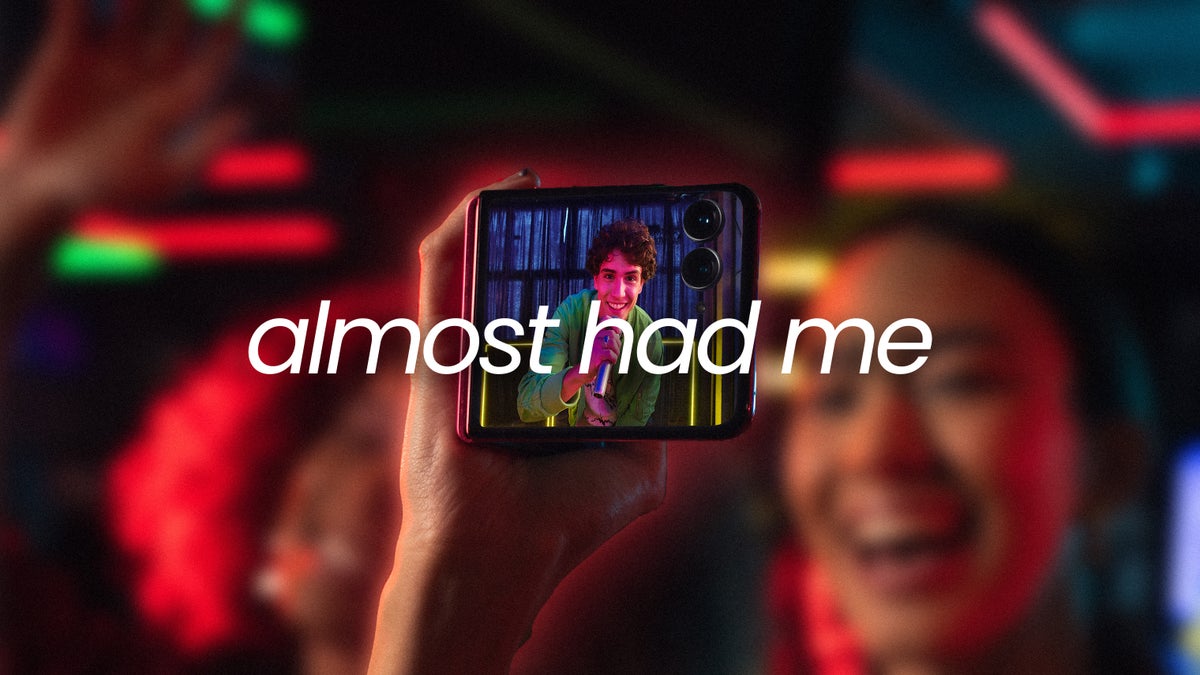So, here’s how that short préambule is directly linked to Motorola’s latest Razr (2024) and Razr Plus (2024) flip-foldables:
- I still want a small phone and in 2024, you can’t really get smaller than a flip phone
- Having experienced a Pixel phone, however, that transition becomes kind of tough
I mean, my current phone takes awesome photos, has a lengthy software support cycle and it kind of, sort of helps that it is made by the guys who made Android to begin with. The Moto Razr Plus doesn’t do any of that and yet costs more than twice as much.
Pricing is a form of strategy
Don’t bother trying to change my mind

Honestly, the Pink variant is an absolute banger too. | Image credit — Motorola
When I chose the Pixel 6a over the Zenfone 9, I did so because of three key reasons:
- Longer software support lifecycle
- Vastly better camera performance (mostly due to post-processing)
- An eye-catching price tag
And while most techies are still waking up to the wonderful reality of “not having to change your phones every 2-4 years”, I’ve been in that camp for awhile now. I just used to have to do it manually after a certain amount of time. Now? Google does it for me. And it makes my life a whole lot easier. But besides that, I’d reckon that most folks would appreciate the lower price tag and solid camera performance just as much, if not more, than little ol’ me. Yet it’s not as simple as that either. Here’s what I mean: a phone’s price tag determines the buyer’s expectations.
I’m not going to pretend like it wasn’t a fact: I had very low expectations for the Pixel 6a and I just kind of needed a new phone. So it was pretty easy for me to get blown away. Key part in the scenario? More than a year later, I’m still impressed and it still gets the job done.
Which is great. But I really, really want a small phone. Better yet: I want a drag of that exciting tech innovation.
In plainer terms: I really want a foldable, man.
Phones ≆ expensive commodities
Earning your cost is a thing


Well, I mean, at least the new Razr is waterproof at IPX8. | Image credit — Motorola
Well, look at it from the brightside: it’s good that we’re not all living in feudal Japan, because I believe that if the Moto Razr (2024) — and its beefed-up sibling — were citizens there, they’d have a tough time earning their keep.
I’m just going to say it plain and simple, as I see it: if the Moto Razr (2024) Plus costs as much as a Pixel 8 Pro, it should offer at least as many features of similar quality. Otherwise, it would just appear as an expensive commodity. And that goes double for when said phone launch happens mere months before the Pixel 9’s launch, which just got revealed and is expected to happen on August 13.
But let me simplify it even further: I love phones in navy. In that dark shade of blue reminiscent of a stormy sea. I almost lost it — in that super-honest nerd-tastic way, which we rarely get to experience in new ways past the age of 30 — when I saw the latest Razr Plus was offered in such a shade.
So, obviously, my first thought was that I should get it. I was already pretty convinced that I’m gonna get the Pixel 9 (especially if a blue variant exists) anyway, so I’m mentally prepped for spending.
Why not live in the moment?
— Myself, in my mind, minutes before I wrote this article
So I tried. But there were these things preventing me from doing that and just being impulsive, hitting the “Buy” button and calling it one of the most fun days of my life.
Form factor isn’t an excuse for lack of staple features
Or, I don’t know, enable manufacturers to ignore industry trends


Yes, that’s a very cool idea. | Image credit — Motorola
When we buy stuff, we’re kind of conditioned to see it as an instant gain. It’s only natural: you’re giving money to get something either pleasurable or useful in return. Sometimes it’s a total win and you get both! Basic stuff, makes total sense: no issues with it.
However, in reality, that’s a transaction. Meaning, you’re giving something away to gain something in return. As such, I’ve developed this very nifty habit of asking a big, important question:
What do I stand to lose if I do this?
- Only 4 years of support? The Pixel 9 will probably offer at least 7
- Those cameras are upgrades, yes, but post production won’t be as good
- There are a ton flip-related features, but we have to be honest: I’m getting this phone to flip it as little as possible
- No dust protection. I have cats. No bueno.
- That huge price tag
Sure, there are positives too. It changes fast enough, it has a great CPU inside with the Snapdragon 8S Gen 3 and 512GB of storage will be more than sufficient for a long time. Oh, and obviously: it is available in navy and, as established above, that’s the only thing I apparently care about with a passion.
And that’s great. But it still doesn’t seem like good enough of a reason to excuse that price tag.
Flip phones aren’t a new concept anymore
Same goes for foldables, so can we stop pretending like they are?


Just a quick example, but I think it looks good. Also, yes, I dig the visor. | Image credit — PhoneArena
Now, call me straightforward (and I am (and that’s a good thing, actually)), but in order for a “new” type of technology to truly enter the iterative process and become notably improved, it must become more widely available. It must be in people’s hands!
Sure: stats point to an impressive increase in foldable adoption rates. I can get the appeal too, but I can’t help but notice that we don’t have super-specific stats on how many of those are carrier deals, or better yet: enterprise deals with companies, where multitasking is a must. Samsung gloating over such achievements (rightfully so) helped nudge me in the right direction for this one.
And all of that is more than fine: it’s wonderful. It’s diverse! But, let me ask you this: how many flip phones are you seeing when you go out on your evening stroll? Better yet: how many friends do you have with a foldable phone? Food for thought.
And for the record, for me it’s just one. I used to know two more dudes with such phones, but they traded theirs away mere months after they got them. And there’s your brain-food side dish.
I think that my entire brainstorming process related to my ultimate decision to not invest in a Motorola Razr Plus from 2024 (in navy, specifically) could give you an idea as to why.
I’d reconsider my decision at $750 and I’d have totally pulled the trigger at $600.
But even at that: lengthy support cycles are finally becoming an industry standard, which I think is good enough reason to call out Moto and request a wake up call. Oh, and: dust protection has been a thing for years now. I mean, if we can have a folding phone, we can probably figure that one out too, right?
As much as I love phones in blue and especially those in navy, what I love more is a logical purchasing decision. One where I feel that I’m not taking a huge gamble while spending. Speaking of: the Pixel 9 is just over the horizon.
Now, can you imagine if Google reveals a Pixel Flip? In navy?! A man can dream. But that man can also tell you one thing: he’d happily pay $999 for such a dream-phone… So long as it had great camera software, at least a basic dustproof rating and 8 years of software support.
Otherwise, even Google ain’t getting a dime over $600 from the dreamer in question.
Okay, maybe $750, but it better be in available in navy!
